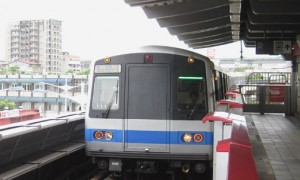Here at WoWasis, we like to say that great transportation systems make great cities even greater. Urban above or below-ground rail systems are transformative. In Bangkok, for instance, the BTS Skytrain has opened entire neighborhoods to new commercial and tourism opportunities. In pre-Skytrain days, getting through Bangkok’s traffic was a nightmare. That must surely have been the case as well in Taiwan’s capital city of Taipei.
From the centralized hub at Taipei’s main train station, three main lines intersect, with four feeder lines intersecting at outlying stations (the Luzhou line, the most recent, was finished in 2010). Each station has easy-to-use pay stations for tickets, and easy to find wall maps detailing the station’s layout as well as its relationship to the immediate locality. Each station has an information booth, the attendants speak English, and most of them have a city transit map in English if you ask for it. The system is fast, clean, easy to use, and inexpensive (most short trips are NT$ 20, under 1 dollar USD). There is even a formidable underground “city” of sorts, comprising the Zhongshan Metro Mall, the Station Front Mall, and the City Mall which sits under the train and adjacent bus station, and connected to the Metro stations accessable from the Main Station MRT stop.
The system closes down at roughly 11:30 each night, a time where taxis are a reasonable alternative. During the day, Taipei’s long traffic lights and voluminous traffic make the Metro system your best choice for travel around Taipei.
